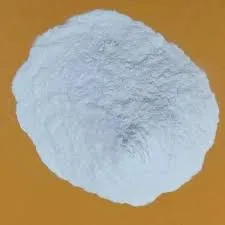
Հկտ . 06, 2024 13:32 Back to list
uses of hydroxypropyl methylcellulose
Uses of Hydroxypropyl Methylcellulose
Hydroxypropyl methylcellulose (HPMC) is a versatile cellulose ether that has found applications in various industries due to its unique properties. This non-ionic polymer is derived from the natural cellulose, which undergoes a series of chemical modifications to enhance its functionality. HPMC is commonly recognized for its thickening, binding, and film-forming properties, making it useful in pharmaceuticals, construction, food, and cosmetics.
Uses of Hydroxypropyl Methylcellulose
Another significant application of HPMC is in the food industry, where it is employed as a thickening agent, stabilizer, and emulsifier. It helps to enhance texture and mouthfeel in products such as sauces, dressings, and bakery goods. Because HPMC is derived from plant sources, it is often used in gluten-free products, providing the necessary structure and consistency without compromising dietary requirements. Furthermore, HPMC is utilized as a fat replacer in low-fat formulations, contributing to a creamy texture while reducing calorie content.
uses of hydroxypropyl methylcellulose

In the construction sector, HPMC is essential in the formulation of cement-based materials, such as tile adhesives and dry-mix mortars. Its water-retention capabilities allow for extended working time and improved adhesion. HPMC also enhances the flexibility and durability of the final product, making it a preferred additive in high-performance construction materials. The polymer's ability to improve the spreadability of adhesives is particularly important in tiling applications, ensuring a strong bond between surfaces.
The cosmetics and personal care industry also takes advantage of HPMC’s properties. It is widely incorporated into skincare products, shampoos, and lotions as a thickening agent and stabilizer. HPMC enhances the viscosity of formulations, providing a desirable texture while ensuring even distribution of active ingredients. Its film-forming characteristics contribute to the performance of products such as hair styling gels and facial masks, creating a protective layer on the skin or hair.
Despite its widespread usage, it is essential to consider the environmental aspects of HPMC. Being derived from renewable resources, HPMC is biodegradable, which aligns with the growing trend of sustainable practices across industries. Researchers and manufacturers continue to explore innovative applications, improving eco-friendliness and expanding the versatility of this remarkable polymer.
In conclusion, hydroxypropyl methylcellulose is a multifunctional compound with broad applications across various sectors. Its unique properties make it invaluable in pharmaceuticals, food production, construction, and cosmetics. As industries continue to evolve, the demand for HPMC is likely to grow, driven by its compatibility with sustainable practices and innovative formulations.
-
What is HPMC?
NewsJun.06,2025
-
Understanding Redispersible Powder: The Future of Construction Materials
NewsJun.06,2025
-
Understanding RDP Powder: The Ultimate Solution for Your Construction Needs
NewsJun.06,2025
-
Pure HPMC: The Ideal Solution for Modern Construction and Building Materials
NewsJun.06,2025
-
Methyl Hydroxyethyl Cellulose: A Versatile Chemical Compound
NewsJun.06,2025
-
Hydroxyethyl Cellulose Power: The Essential Chemical for Various Industries
NewsJun.06,2025







